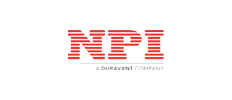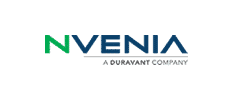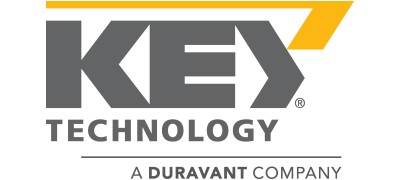
January 2022
Cleaning and sanitation is a core principle of every food processing facility. High cleaning standards help minimize the risk of product contamination to protect consumers and the company’s reputation, as well as avoid costly recalls. To prevent unsanitary conditions and maintain food safety, all surfaces that come into direct or indirect contact with foodstuffs, including tools and equipment, must have product residue, debris, and dirt manually removed as often as necessary.
Fortunately, cleaning isn’t difficult as long as you follow a few simple guidelines. In this edition of the Service Advisor we will review best practices for cleaning and sanitizing your VERYX optical sorters and Iso-Flo Conveyors.
A Quick VERYX Cleaning Guide
Comprehensive cleaning and sanitation is critical to maintain product integrity and safety. To help you ensure food safety, high yield, and longer life for your VERYX sorter, we’ve developed a quick and simple cleaning guide.
Before You Begin
All installation and maintenance personnel must read and understand the Safety Awareness chapter in the VERYX Technical Manual before working on the sorter.
To prevent water from entering the cabinets, keep the compressed air on at all times. Do not proceed if compressed air is not available.
Never use paper towels, ammonia, or solvents on the light tubes or windows.
Tools & Supplies
A few of the tools and supplies you should have available when cleaning your VERYX optical sorter:
- compressed air gun
- clean, soft, and lint-free towel
- warm water
- vinegar
- sponge
- squeegee
Step 1 – Start Cleaning Mode
Make sure all the cabinets are firmly closed before cleaning. Select the Commands button on the main navigation bar.
Put the sorter into Standby Mode to be cleaned. To do this, scroll down to Start Cleaning and select the Send button.
Step 2 – Clean Top to Bottom
While the infeed belt is running, use a wash-down hose or compressed air gun to remove product remnants from top to bottom and back to front, in one horizontal direction, paying particular attention to the following areas:
- belt wiper brush
- conveyor belt
- discharge area
- background roller
- camera and laser window area
- lighting assembly
Step 3 – Clean the Infeed Belt
While the infeed belt is running, clean it with warm water. For more information on cleaning agents, refer to your VERYX Technical Manual.
Do not use high pressure air or water equipment on the sorter.
Step 4 – Stop the Infeed Belt
Select the Commands button on the main navigation bar.
To stop the infeed belt, scroll down to Transport Off, and select the Send button.
Step 5 – Clean the Light Modules and Background Rollers
Clean the light modules and background rollers using warm water, vinegar, and a clean, soft, lint-free towel.
Step 6 – Clean the Windows
After the sorter has been cleaned on the outside, lift up the scan shield of the front and rear inspection unit and remove any product remnants. You can easily remove the scan shields by grabbing the handles and lifting them upwards.
Inspect the optical windows and remove any dirt or water residue with a clean, lint-free towel. Use a non-corrosive window cleaning product.
Step 7 – Top Window Wiper
Once the cleaning cycle is complete, push the handle forward to wipe the window clean.
Return the handle back to its original position, otherwise the wiper will block the line-of-sight.
Step 8 – Exit Cleaning Mode
Once cleaning is complete, select the Exit Cleaning Mode button on the UI.
5 Safety Tips for Sanitizing Your Iso-Flo Conveyor
- Clearly label chemical solutions. Identify the concentration and preparation date on the label.
- Store chemicals in approved containers in a cool, well-ventilated area. Different classes of chemicals, e.g. acids, bases, oxidizers, etc. should be stored in separate areas, or on separate shelves.
- Always wear your PPE, such as goggles, face shields, and respirators to protect against mists, vapors, and fumes that could potentially be harmful. Be sure to wear proper clothing, such as gloves, apron, and in some cases a full body suit to protect against caustic chemicals. Non-skid chemical-resistant footwear may also be required, as the floor can become very slippery with the use of detergents.
- When using chemicals, always work in a well-ventilated area.
- Never mix chemicals unless instructed to do so by the Manufacturer.
Remember, cleaning and sanitizing involves handling potentially hazardous chemicals. Before beginning you should familiarize yourself with the Hazard Communication Standard (HCS) mandated by OSHA within the US. The HCS aligns with the Globally Harmonized System (GHS).
We Are Here to Help!
We are always here to help! Contact us to learn how Key equipment can improve food safety in your processing facility.
← Back to Service AdvisorMore Newsletters
-
April, 2022Five Reasons to Invest in Employee Training Read More →
-
March, 2022Let’s Talk Shakers : Tips to Tune & Maintain your Iso-Flo and Impulse Conveyors Read More →
-
February, 2022Safety 101, Care Tips, & Training Resources Read More →
-
January, 2022Cleaning and Sanitizing Safety Tips for Your VERYX Sorter and Iso-Flo Conveyor Read More →
-
December, 2021A Year in Review: the Service Advisor in 2021 Read More →




















